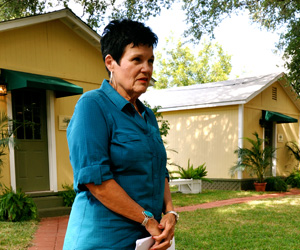
Addicted to Food Q&A: Tennie McCarty and Tough Love
Tennie brings over thirty years of combined professional and personal insight to the treatment of addictive diseases. Growing up in a home of addiction, abuse and dysfunction, she knew first-hand how eating disorders, sex, and alcohol and drug abuse can become coping mechanisms of survival.
After realizing that her husband was an alcoholic, she became a therapist and was one of the first women in Texas to be certified as a licensed chemical dependency counselor. Read on for a Q&A session with Tennie about Shades of Hope and her tough-love treatment style.
What is the 42-day program at Shades of Hope, and why is the first phase 42 days?
Can you be healed in 42 days?
What are the basic components of the meal plan at Shades of Hope, and why is smoking and drinking forbidden?
Why are clients not allowed to bring outside books or magazines, and why is there no television?
Why aren't clients allowed to see their weight?
Tennie's 5 signs for identifying if you or a loved one is a food addict.
What should clients expect when they reach the recovery phase of their journey?
Tennie's 5 tips for continuing on in recovery.
Go to the first page












